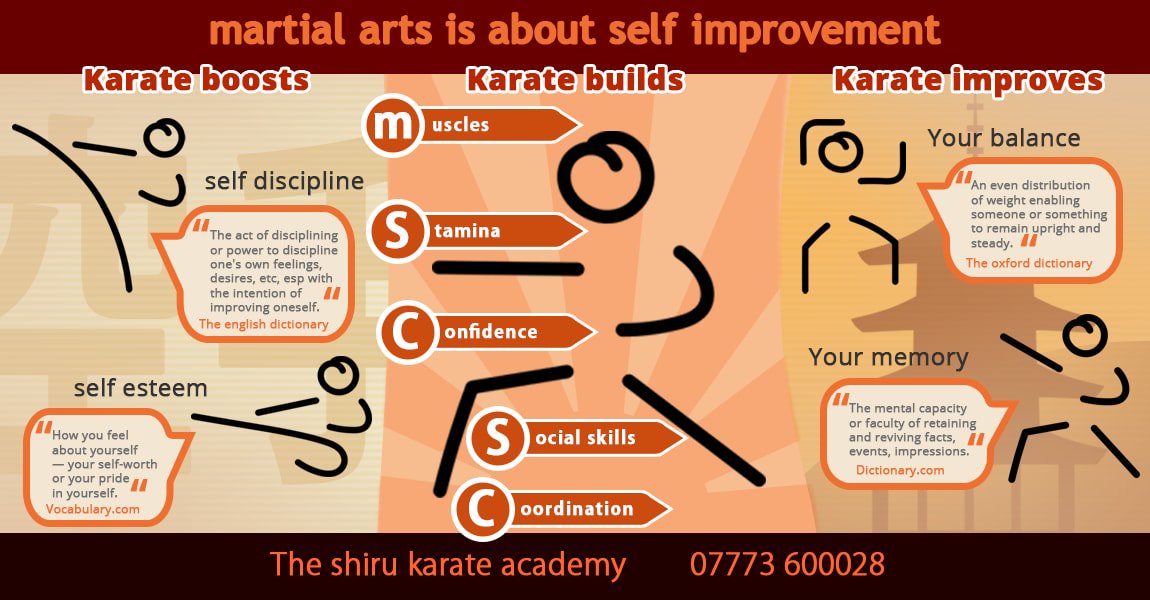The History And Evolution Of Martial Arts: From Ancient Origins To Modern Techniques
The History And Evolution Of Martial Arts: From Ancient Origins To Modern Techniques
Blog Article
Personnel Writer-Borup Valentine
Step into the globe of martial arts, where old beginnings and modern strategies collide in an exhilarating journey of discipline and self-discovery.
As you explore the history and development of this fascinating art type, prepare to be mesmerized by the cultural influences, technical improvements, and extensive viewpoint that have formed it over centuries.
From the battlegrounds of old human beings to the training premises these days, martial arts have actually stood the test of time, frequently adjusting and expanding.
Each strike, each activity, carries with it the weight of countless years of tradition and wisdom, gave through generations. which martial art for me is a tale of resilience, of warriors that sought not just physical prowess, however likewise self-confidence and harmony.
Join us on this remarkable expedition as we discover the tricks, the tales, and the transformational power of martial arts.
Get ready to be motivated, tested, and for life changed by the background and development of martial arts.
Cultural Influences on Martial Arts
As you explore the background and evolution of martial arts, you'll quickly discover the remarkable methods which cultural influences have formed these fight strategies.
From the old civilizations of China and India to the more current developments in Japan and Brazil, martial arts have been heavily affected by the cultures in which they originated.
For instance, Chinese martial arts, such as Kung Fu and Tai Chi, are deeply rooted in the ideology of Taoism and the principle of Yin and Yang.
On the other hand, Japanese martial arts, like Karate and Judo, reflect the samurai warrior customs and the values of discipline and honor.
In a similar way, Brazilian martial art, Capoeira, incorporates aspects of African dancing and songs, reflecting the cultural heritage of African servants in Brazil.
martial arts without belt provide each fighting style its one-of-a-kind attributes however additionally supply a deeper understanding of the historic and social contexts in which they advanced.
Technological Innovations and Martial Arts
With the surge of sophisticated weapons and cutting-edge training devices, you have actually been able to boost your skills and adjust to the ever-changing combat landscape.
Technical innovations have reinvented the method martial arts are exercised and educated. Virtual reality simulations now allow you to train in practical combat situations without the danger of physical damage. High-speed cameras catch every action, allowing you to analyze and excellent your strategies. Wearable devices check your heart price, breathing, and muscular tissue activation, offering immediate responses on your efficiency.
Furthermore, the advancement of specific tools, such as resistance bands and dexterity ladders, has actually allowed you to boost your rate, stamina, and agility. These technological developments have not only made training a lot more efficient but have also pressed the borders of what is possible in martial arts, enabling you to get to brand-new heights in your technique.
The Approach and Principles of Martial Arts
The philosophy and concepts of martial arts are deeply rooted in shaping your way of thinking and instilling self-control, focus, and respect in your technique.
1. Frame of mind: Martial Arts educates you to develop a solid and resistant state of mind. https://kalkinemedia.com/us/education/education/randy-boom-boom-blake-jr-inducted-into-the-united-states-martial-arts-hall-of-fame-class-of-2023 enables you to conquer challenges both on and off the mat, pressing your limits and being determined despite difficulty.
2. Self-control: Martial Arts needs self-control and self-control. Via regular training and adherence to strict guidelines and techniques, you find out to control your impulses and develop a solid job ethic.
3. Emphasis: Martial Arts needs intense emphasis and concentration. By training your mind to be existing in the moment, you boost your capability to react promptly and successfully during combat scenarios.
4. Respect: Martial Arts emphasizes regard for oneself, instructors, training companions, and opponents. It teaches you to value the skills and experiences of others, cultivating a feeling of friendship and sportsmanship.
Verdict
Congratulations on completing your trip through the exciting world of martial arts! Throughout this expedition, you have observed the rich history and amazing development of these battle practices.
From their ancient beginnings to the modern strategies we see today, martial arts have been shaped by cultural impacts.
The assimilation of technology has actually additionally played a substantial duty in reinventing the means martial arts are taught and exercised in the here and now day.
Nonetheless, it is necessary to bear in mind that martial arts are more than just physical battle. They encompass extensive approaches and directing concepts that exceed the plain act of fighting.
Take a moment to review this obsolete journey and appreciate just how the tradition of martial arts remains to thrive in the here and now, going beyond time and boundaries.
